Nessie. Champ. Ogopogo. The monsters you know because they’ve been highly publicized over the years. But other sea monsters, the ones you don’t hear about everyday, tend to be way more terrifying, mysterious, fake… or all three.
1.
Digonek
God blessed the rains down in Africa. With terror.
The Digonek, also known as the “jungle walrus,” is reported to be anywhere from twelve to eighteen feet long, covered in scales with a back lined with dart-like spines, possesses razor sharp claws, a horn, a squarish head and a scorpion tail. Oh, and it has tusks, too. If you’re looking for the walrus connection, there you go.
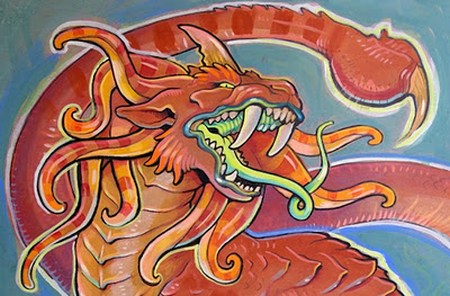
If Pokemon were designed by Satan.
The Digonek makes its home in the lakes and rivers of Western Africa, feeding off hippos, crocodiles and people who are too foolish to realize that a scorpion-walrus-snake hybrid is something to avoid at all costs.
Though there are regular sightings of the beast, there exist only two major records of the monster. One is a cave drawing in the Brackfontein Ridge that’s said to be a striking resemblance of the beast (as much as a cave drawing can be, anyway). The second is the account of explorer John Alfred Jordan. While traveling the Kenyan river Maggori in 1907 he claimed to have encountered and even shot at the beast. While many cryptids have been proven to be a hoax or at least can be tied to an actual living thing, the Digonek’s reign of terror continues unchallenged because it is literally a hodgepodge of what’s in Mother Nature’s junk drawer.
2.
Dobhar-chu
An Irish monster, the Dobhar-chu is sometimes described as being a giant crocodile though has been described as having different features in the hundreds of years it’s been thought to exist. The name translates as “water hound,” playing off early descriptions that it was half dog and half fish. Other depictions show it as an otter. One thing is certain: Ireland needs to invest in a goddamned Lenscrafters.
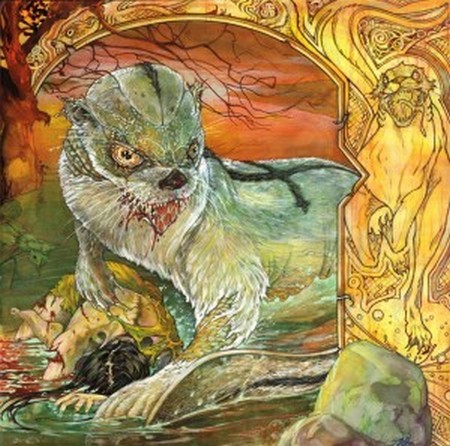
Seriously, people. Get some corrective lenses.
Sightings of Dobhar-chu are uncommon, with the most recent happening around 2003. However, the most popular account is also the most horrifying. In the 17th century a woman named Grainne was heard screaming as she did laundry at the Glenade lough. Her husband leaped into action, but he was too late. He discovered Grainne’s corpse being feasted upon by Dobhar-chu. In a moment that fuses a badass sense of justice with creepy romantic imagery, he stabbed the monster in the heart.
And that would be a great place for the story to end, except that it isn’t. As the Dobhar-chu laid dying it let out a strange whistle, summoning a second Dobhar-chu to finish the job. A drawn out battle ensued with humans yet again trumping nature’s screwed-up design.
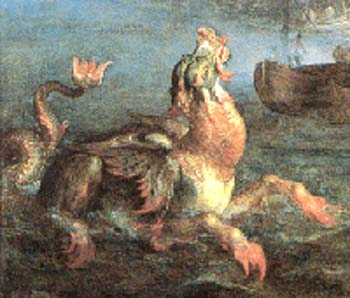
The story relates to a gravestone known as the Kinlough Stone, the woman’s burial place. On the front of the stone is an etching of the Dobhar-chu. Unfortunately, the phrase “never forget” had yet to enter popular vernacular. There’s also a second stone with the same image.
3.
The Loveland Frogs
In 1955 a businessman traveling near Loveland, Ohio, spotted something strange underneath a bridge: a series of figures, three to four feet tall, that looked almost human. They apparently had no lips and wrinkled heads as well as lopsided chests. For some reason, no one seemed to give much of a damn about his story, and that was that.
Some twenty-three years later there was another siting. A police officer driving along the Riverside Road came upon the creature lying in the street. When the officer shone his headlights, the creature brought itself upright in a crouching position before leaping over the guardrail and into the Miami River. The officer’s description matched the one from 1955, but added leathery skin to the mix because frog people alone simply aren’t frightening enough.
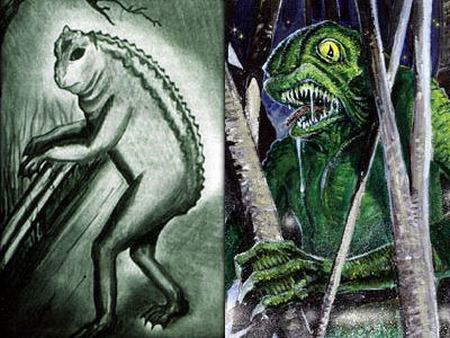
Two weeks later Officer Mark Mathews had a similar encounter to that of the first officer, though he came to the conclusion that he should shoot the mystery creature because hey, why not? But he missed and the creature escaped. Though he never officially reported the incident, the story somehow was leaked to the media and used to support the first officer’s story. Mathews, however, contends that there is no frog man and that he had simply encountered a pet lizard that somehow got loose, which begs the question: why did he feel the need to fire live ammunition at someone’s pet?
4.
Bunyip
A part of Aboriginal Australian mythology, the name Bunyip roughly translates into “water spirit” or “water devil,” implying that it’s a bad dude. However, there are at least nine known variations of the Bunyip, meaning that there could be at least nine different bad dudes. What’s more troubling is that no one can actually determine what this thing is supposed to look like. Most attempts by researchers to uncover the origins of the Bunyip note the different descriptions and ascribe it to the different tribes being scared to the point that people either don’t remember or simply didn’t look. Wrap your mind around that for a second.
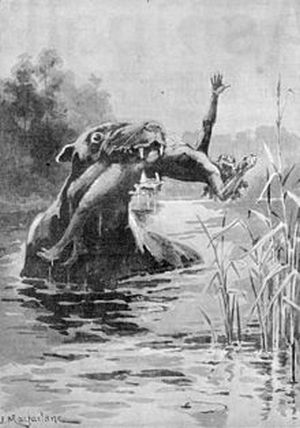
Peek-a-boo!
Two noted descriptions vary in complexity. One is, apparently, just a giant starfish. Spooky! The other falls much closer to the Digonek theory of design: dark fur, a dog face, walrus tusks (what’s with the walruses, anyway?), flippers and a horse tail, though some accounts throw in horns for good measure. It’s said to lurk in major bodies of water as well as swamps, ensuring that no one is safe.
Most written accounts of Bunyips relate stories of European explorers and settlers that encountered unfamiliar fossils. After they had become more familiar with local stories of the creature, unexplained sounds, tracks and animals, all became Bunyips. Because of this, tracking the creature’s origin is pretty much impossible. A leading theory suggests that locals may have confused Bunyips with seals, who were known to swim into the area, though somewhat rarely. Others have suggested that it may actually be a cultural memory of now extinct creatures. If that’s the case, it only proves what we already know for sure: Australia has always been a frightening place.
5.
The Brosno Dragon
Not wanting to be left out of the cryptid fun, Russia proudly presents the Bronsno dragon, a creature with a description even more ambiguous than the Bunyip. By most accounts it’s literally a dragon or dinosaur. Those lacking an imagination simply refer to it as a giant mouth. It makes its home in Lake Brosno and is said to be responsible for over-turned boats and missing people.
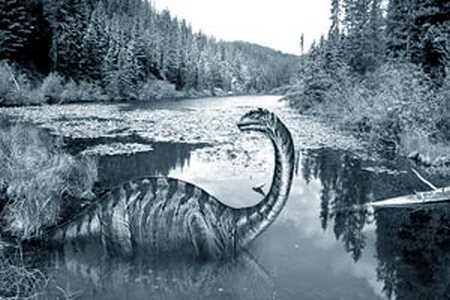
There’s quite a few local legends about the creature, some of which date as far back as the 13th century. In one, an invading Mongol army made camp near the lake. When the horses ventured down to drink, the beast emerged with a horrible cry before promptly eating as many soldiers and horses as it could. The Mongols fled and did not return.
In another story the creature uses a small island to lure people into the lake. Thieves seeking to hide their treasure until the heat dies down swim out to the island only to be devoured. But because the dragon knows a thing or two about crime scene forensics, it also eats the entire island.
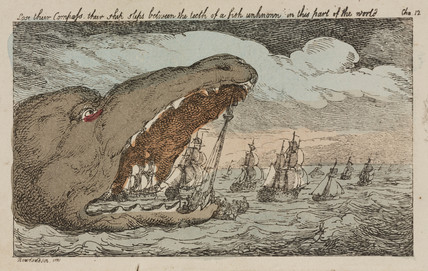
“Feeeeeeeed me!”
Sitings of the dragon continue to this day, and while there have been a few attempts to explain what the dragon is (rising gas or volcanic eruptions), few answer the question satisfactorily.
Written by NN – Copyrighted © www.weirdworm.net
Image Sources
Image sources:
- – Digonek: http://3.bp.blogspot.com/-OWXSIrmkAeo/Tt1XWt0R63I/AAAAAAAAtXk/C_7GbLxbrMs/s400/Dingonek-Monster.jpg http://americanmonsters.com/site/wp-content/uploads/2010/01/dobharchu41.jpg
- – Dobhar-chu: http://americanmonsters.com/site/wp-content/uploads/2009/12/dobhar-chu-300×297.jpg
- – The Loveland Frogs: http://www.scaryforkids.com/pics/loveland-01.jpg
- – Bunyip : http://upload.wikimedia.org/wikipedia/commons/thumb/a/a8/Bunyip_1890.jpg/220px-Bunyip_1890.jpg
- – The Brosno Dragon: http://2.bp.blogspot.com/_zPeuVPvGnIU/S6rBOr6fzNI/AAAAAAAAAL0/sMTrZUrwGM8/s320/Brosno_dragon.jpg http://americanmonsters.com/site/wp-content/uploads/2010/01/brosno4.jpg







